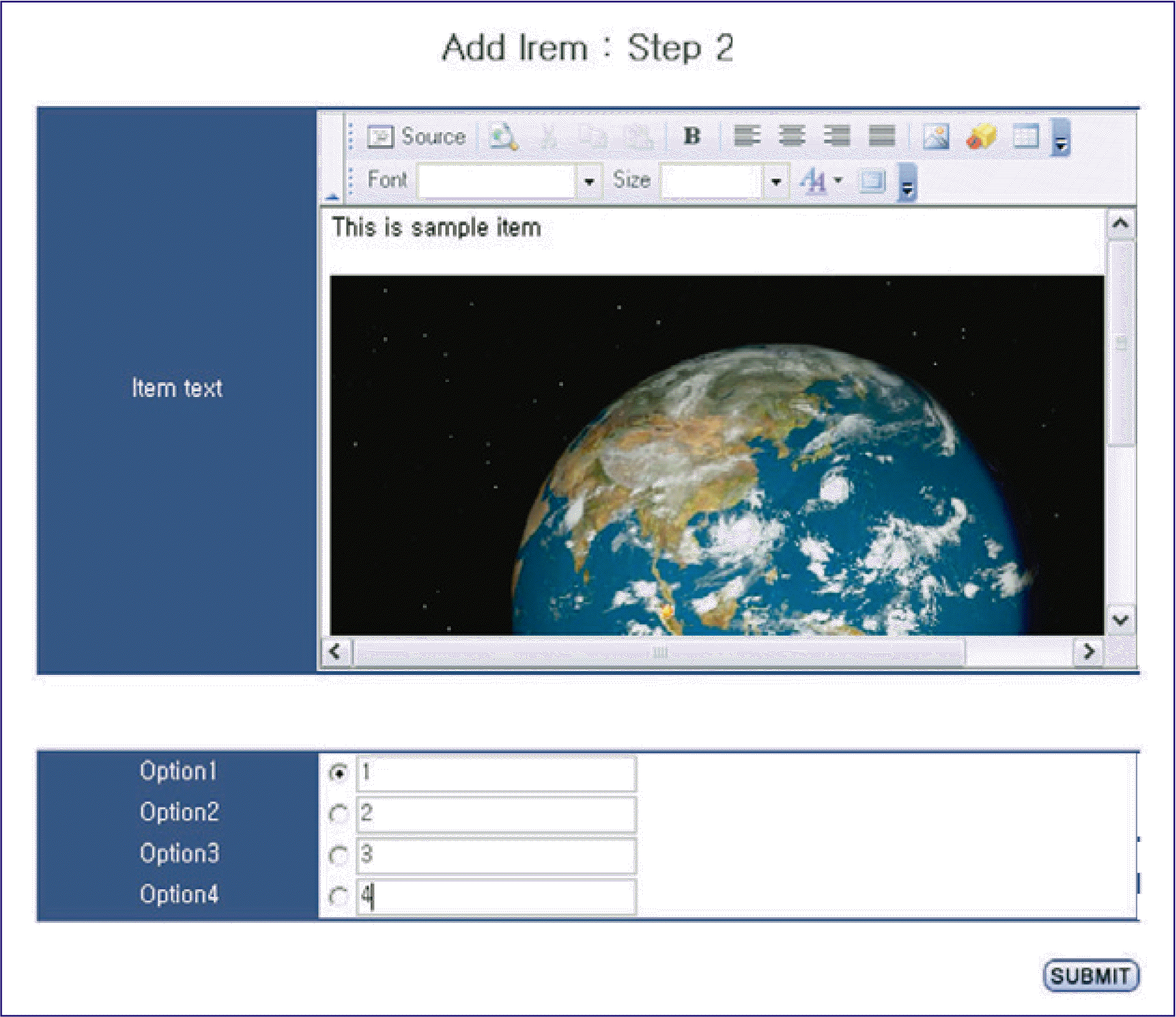Articles
- Page Path
- HOME > J Educ Eval Health Prof > Volume 3; 2006 > Article
-
Research Article
Estimation of an Examinee's Ability in the Web-Based Computerized Adaptive Testing Program IRT-CAT - Yoon-Hwan Lee*, Jung-Ho Park, In-Yong Park
-
DOI: https://doi.org/10.3352/jeehp.2006.3.4
Published online: November 22, 2006
Department of Information and Statistics, Hallym University, Chuncheon, Korea
- *Corresponding e-mail: yoonani72@gmail.com
© 2006, National Health Personnel Licensing Examination Board of the Republic of Korea
This is an open-access article distributed under the terms of the Creative Commons Attribution License, which permits unrestricted use, distribution, and reproduction in any medium, provided the original work is properly cited.
- 45,805 Views
- 170 Download
- 5 Crossref
Abstract
- We developed a program to estimate an examinee’s ability in order to provide freely available access to a web-based computerized adaptive testing (CAT) program. We used PHP and Java Script as the program languages, PostgresSQL as the database management system on an Apache web server and Linux as the operating system. A system which allows for user input and searching within inputted items and creates tests was constructed. We performed an ability estimation on each test based on a Rasch model and 2- or 3-parametric logistic models. Our system provides an algorithm for a web-based CAT, replacing previous personal computer-based ones, and makes it possible to estimate an examinee’s ability immediately at the end of test.
- Although computerized adaptive testing (CAT) has been widely used for large scale examinations and for the assessment of the psychological indices, no freely available, well-documented web-based program is known. An ability estimation algorithm was first described by Baker [1] that can be used for a personal computer base. Kim et al [2] at Busan University in Korea published the java source for a CAT in a textbook first in Korean. However, nowadays the user interface for examination has rapidly changed from personal computer-based to web-based. For a CAT system, the following four components are necessary:
- There is no integrated program freely available to execute CAT in the educational fields including the above four categories. Therefore, to provide an open access web-based computerized adaptive testing (CAT) program based on the Rasch model and 2- and 3-parametric logistic models, we tried to make a web-based ability estimation program after constructing the management system of examination, including an item bank.
INTRODUCTION
- Tools used for programming were as follows:
- Server Environment
Operating System (OS): Fedora Core 4 (Linux Kernel Version: 2.6.11)
Web Server: Apache 2.2.0
Database management system (DBMS): PostgresSQL 8.1.2
Languages: PHP-5.1.2 with Zend Optimizer 2.6.2, HTML and JavaScript
- User interface
- Algorithm
- The key algorithm was already known for the ability estimation [2]. It was coded for web-inferface.
MATERIALS AND METHODS
- Input of items
- Items can be inputted on a website. At first, basic information, such as category, item type, key words, IRT model, item parameters already determined, answer option form and number of answer option (Fig. 1), are added. An item stem can be inputted for text, and flash files can be inputted for multimedia data such as images, sounds and movie (Fig. 2). Items are presented randomly to each examinee. The table structures are shown in Fig. 3.
- Search within items
- On the screen, key words or text words from the items can be used to search. A Boolean search with two categories is also possible (Fig. 4). As for the CAT, each item that was already analyzed according to the respective IRT model can be searched. Each item’s information function is viewed, and the rate of options by examinees in the CAT is also presented (Fig. 5).
- Creation of test and the addition of items
- To create the test, the title, start and stop time, and type of test should be inputted (Fig. 6). Available types are computer-based testing, Rasch model, and 2- or 3-parametric logistic models. The addition of items to the test can be done by selecting items in the item bank or by adding new items manually. Added items are automatically registered in the item bank.
- Estimation of the examinee’s ability
- Estimation of the examinee’s ability was done according to the maximum likelihood estimation for the Rasch model and 2- or 3-parametric logistic models. The theoretical process was referenced from Kim et al2. Unlike Kim et al’s source codes, the present source codes can estimate the ability of examinees from multiple examinations because this present one provides a common structure for item information functions, regardless of the number of examinations. Kim et al’s source codes are only applicable to one examination. A flow chart of the ability estimation was presented in Fig. 7. Source codes for the estimation of an examinee’s ability are presented in Appendix 1.
- Viewing the results of an examination
- After the termination of an examination, the results can be shown immediately. The examinee’s ability is shown (Fig. 8). Each examinee’s response to each item can be seen after clicking on an examinee’s name (Fig. 9). Since the results of the examination were analyzed on the web, there is no need to download result files and analyze them again.
- CAT program
- Source code of CAT in this paper is freely available at https://sourceforge.net/projects/irt-cat/
- Execution of the CAT in the field
- The CAT program in this paper has already been implemented in the educational field with easy interpretations of examinees’ ability [3].
RESULTS
- The merits of the present program for the estimation of an examinee’s ability are that it is web-based and allows for the immediate estimation of ability after the termination of testing. Also, the selection of the less exposed items was prompt because the results of exposure are recorded in the system. Practical issues in developing and maintaining a CAT program included an item bank, test administration, test security and examinee issues [4]. Out of these, item bank and test administration was also actually addressed in the IRT-CAT program. Test security and examinee issues should be dealt according to the policy of each institute during the implementation of the CAT program. Since it is difficult to get a freely available CAT program, IRT-CAT may open the horizon for an easily applicable web-based CAT. It may be able to be used widely for large-scale examinations, class-based examinations, equating studies among many educational institutes, and psychological examination in the clinic. This system may still not be complete. Therefore, it will be helpful to other researchers to transform the program for their own purposes taking advantage of this program’s open source code. We would like to add the system of parametric estimation for pretest items that are not used for the ability estimation according to item response theory after termination of examination to present IRT-CAT program.
DISCUSSION
- 1. Baker FB. Item response theory: Parameter estimation techniques. New York: Marcel Dekker; 1992. PubMed
- 2. Kim YH, Sohn M, Chung HT. Practice of the computerized adaptive testing. Seoul (KR): Munumsa; 2002. Korean. PubMed
- 3. Kim MY, Lee YH, Huh S. Correlations between the scores of computerized adaptive testing, paper and pencil tests, and the Korean Medical Licensing Examination. J Educ Eval Health Prof 2005;2:113-8. ArticlePDF
- 4. Wise SL, Kingsbury GG. Practical issues in developing and maintaining a computerized adaptive testing program. Psycologica 2000;21:135-55.
References
Appendix
Appendix 1.
1. Input of items
2. Flow chart of the estimation process
3. Estimation of the examinee’s ability: testManager.php
Figure & Data
References
Citations
Citations to this article as recorded by 

- Analysis on Validity and Academic Competency of Mock Test for Korean Medicine National Licensing Examination Using Item Response Theory
Han Chae, Eunbyul Cho, SeonKyoung Kim, DaHye Choi, Seul Lee
Keimyung Medical Journal.2023; 42(1): 7. CrossRef - Accuracy and Efficiency of Web-based Assessment Platform (LIVECAT) for Computerized Adaptive Testing
Do-Gyeong Kim, Dong-Gi Seo
The Journal of Korean Institute of Information Technology.2020; 18(4): 77. CrossRef - Computer‐Based Testing and Construction of an Item Bank Database for Medical Education in Korea
Sun Huh
Korean Medical Education Review.2014; 16(1): 11. CrossRef - Can computerized tests be introduced to the Korean Medical Licensing Examination?
Sun Huh
Journal of the Korean Medical Association.2012; 55(2): 124. CrossRef - Application of Computerized Adaptive Testing in Medical Education
Sun Huh
Korean Journal of Medical Education.2009; 21(2): 97. CrossRef

 KHPLEI
KHPLEI

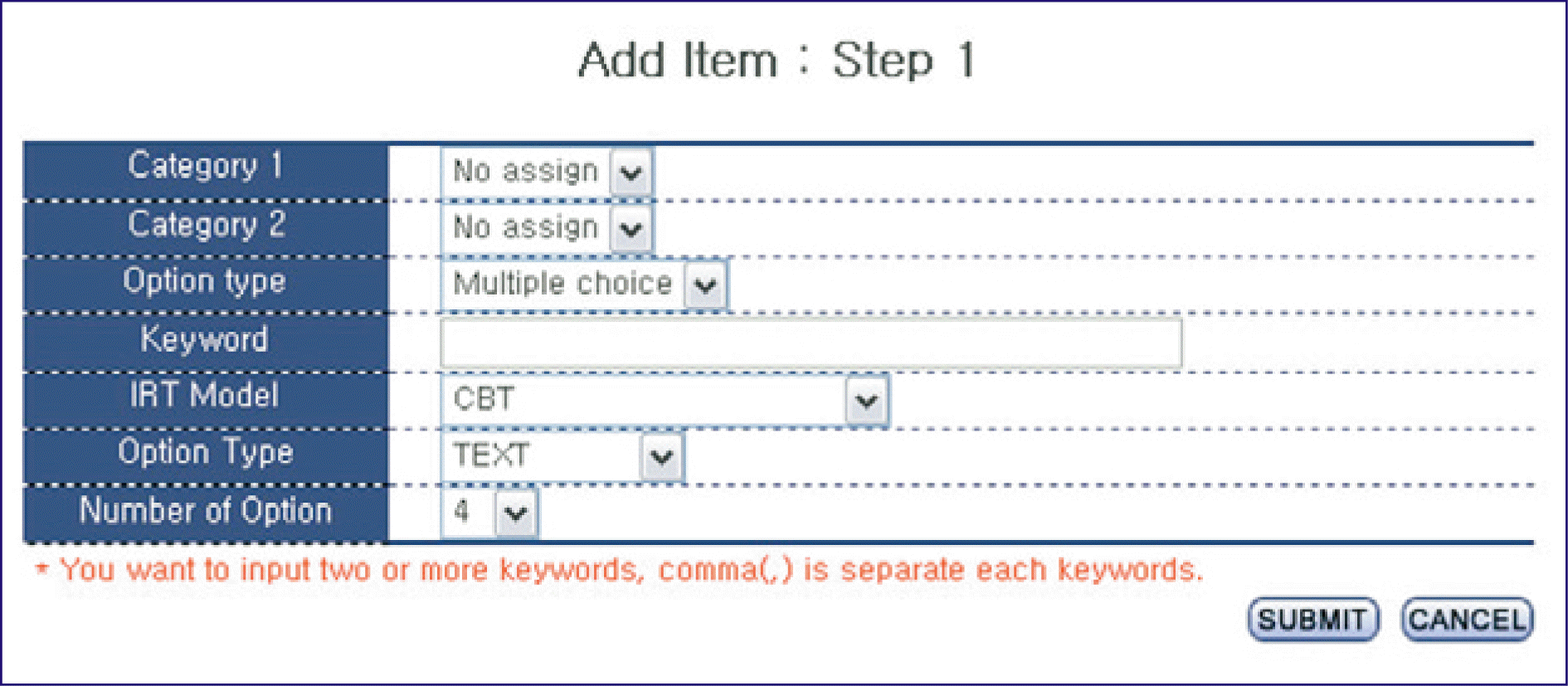



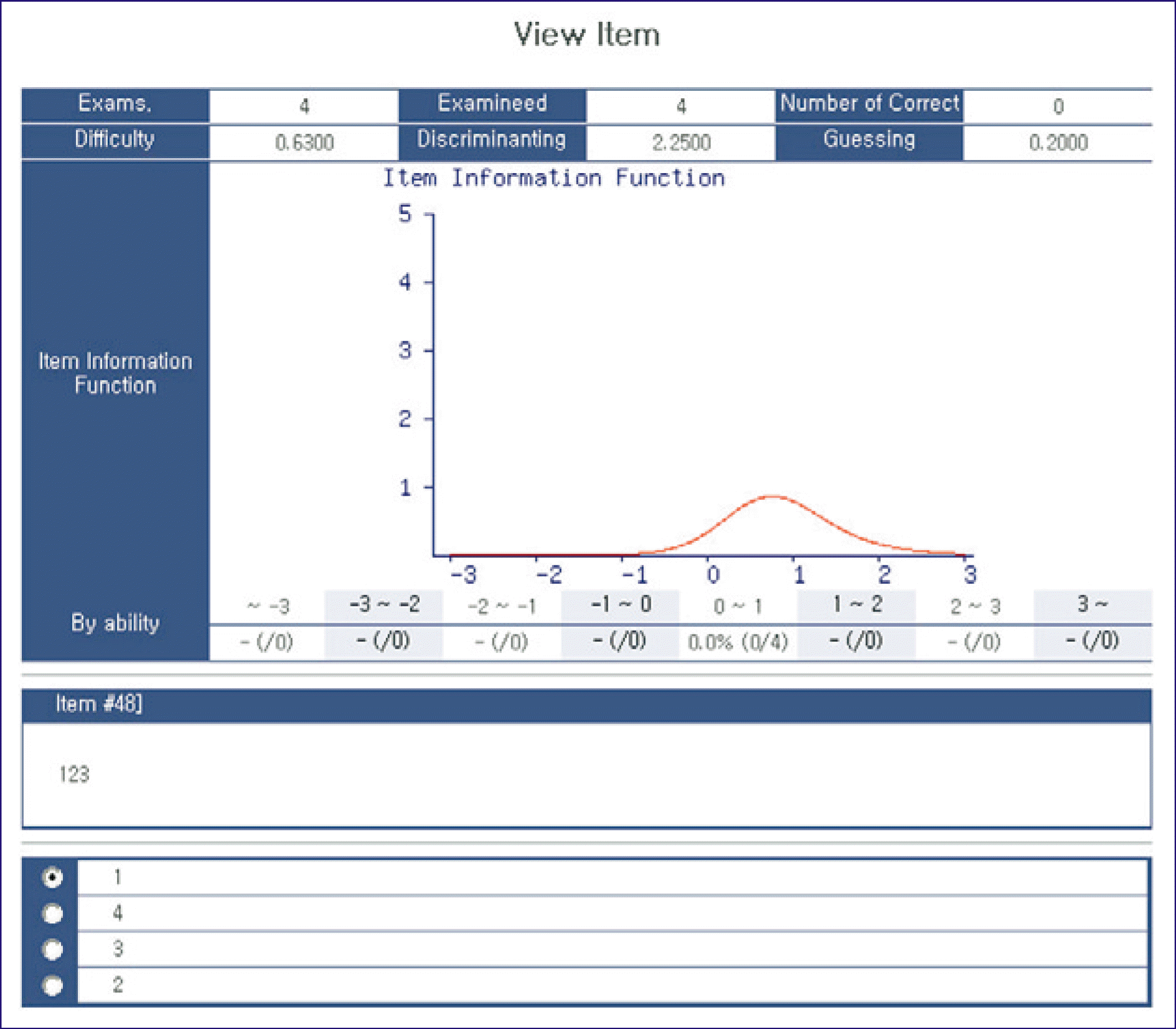

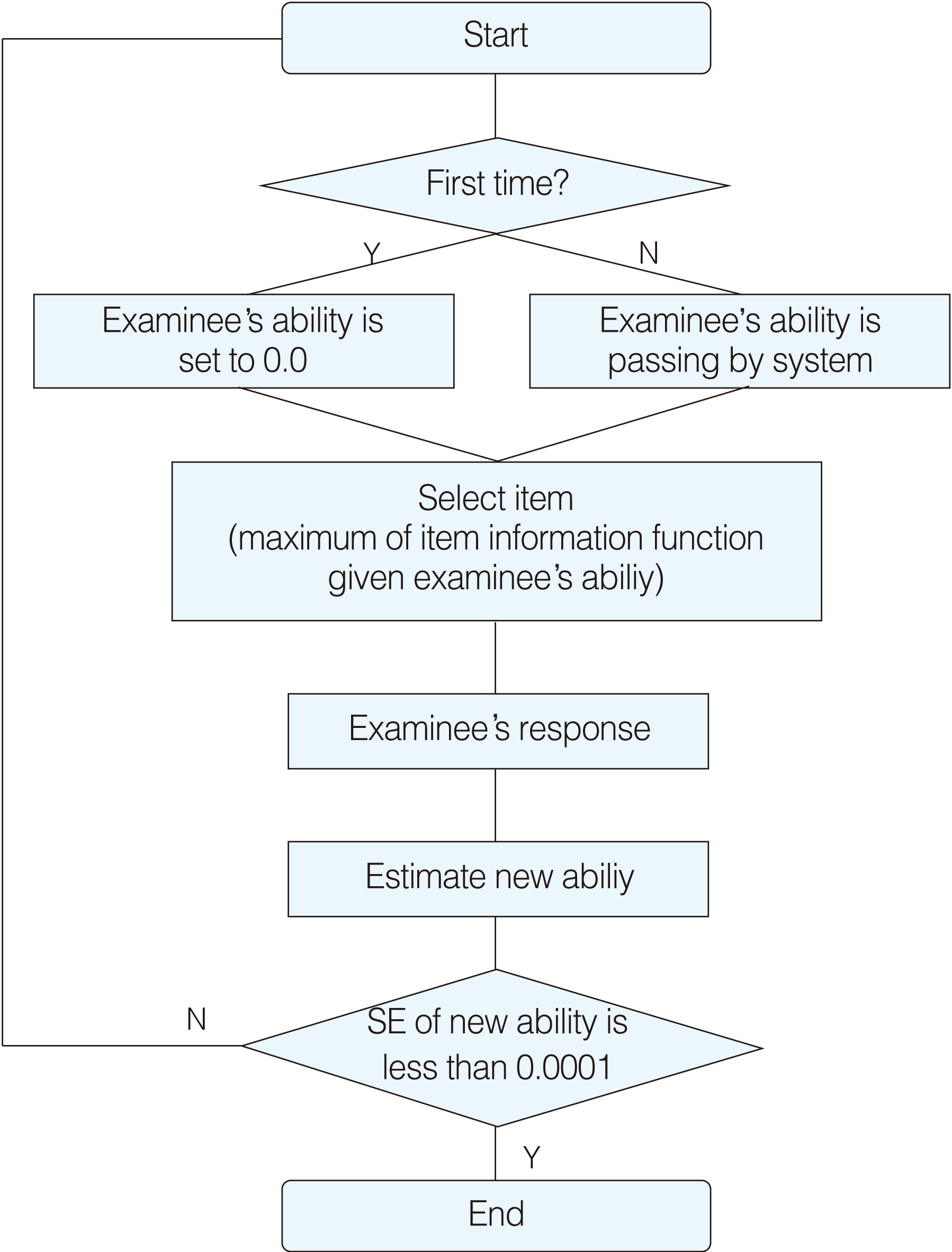

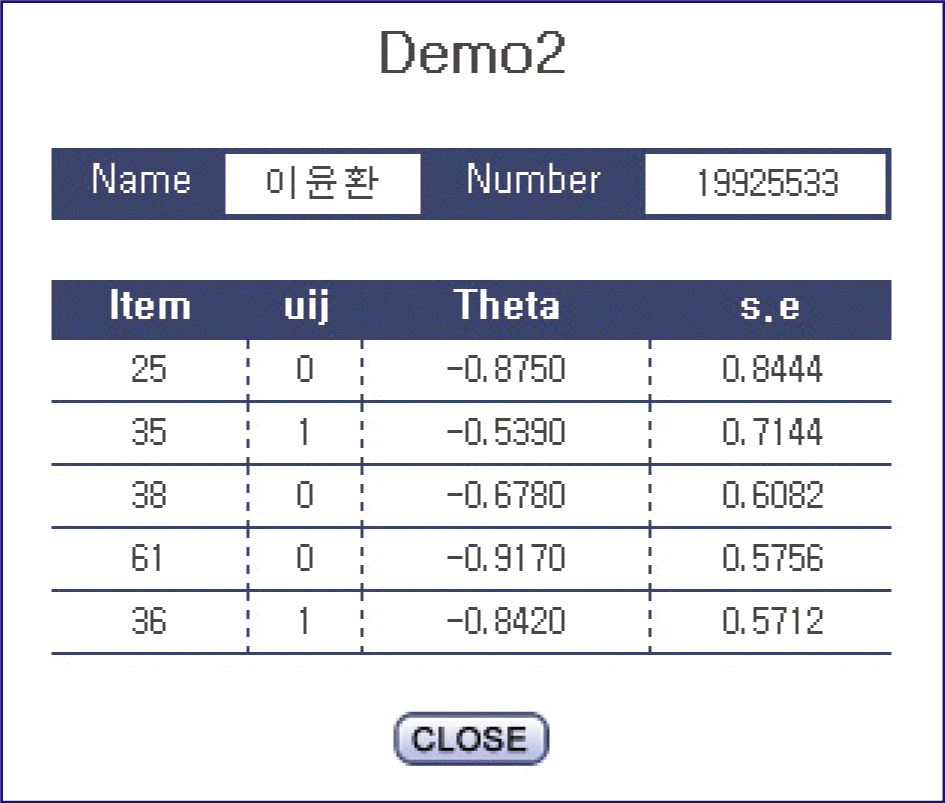
 PubReader
PubReader ePub Link
ePub Link Cite
Cite
